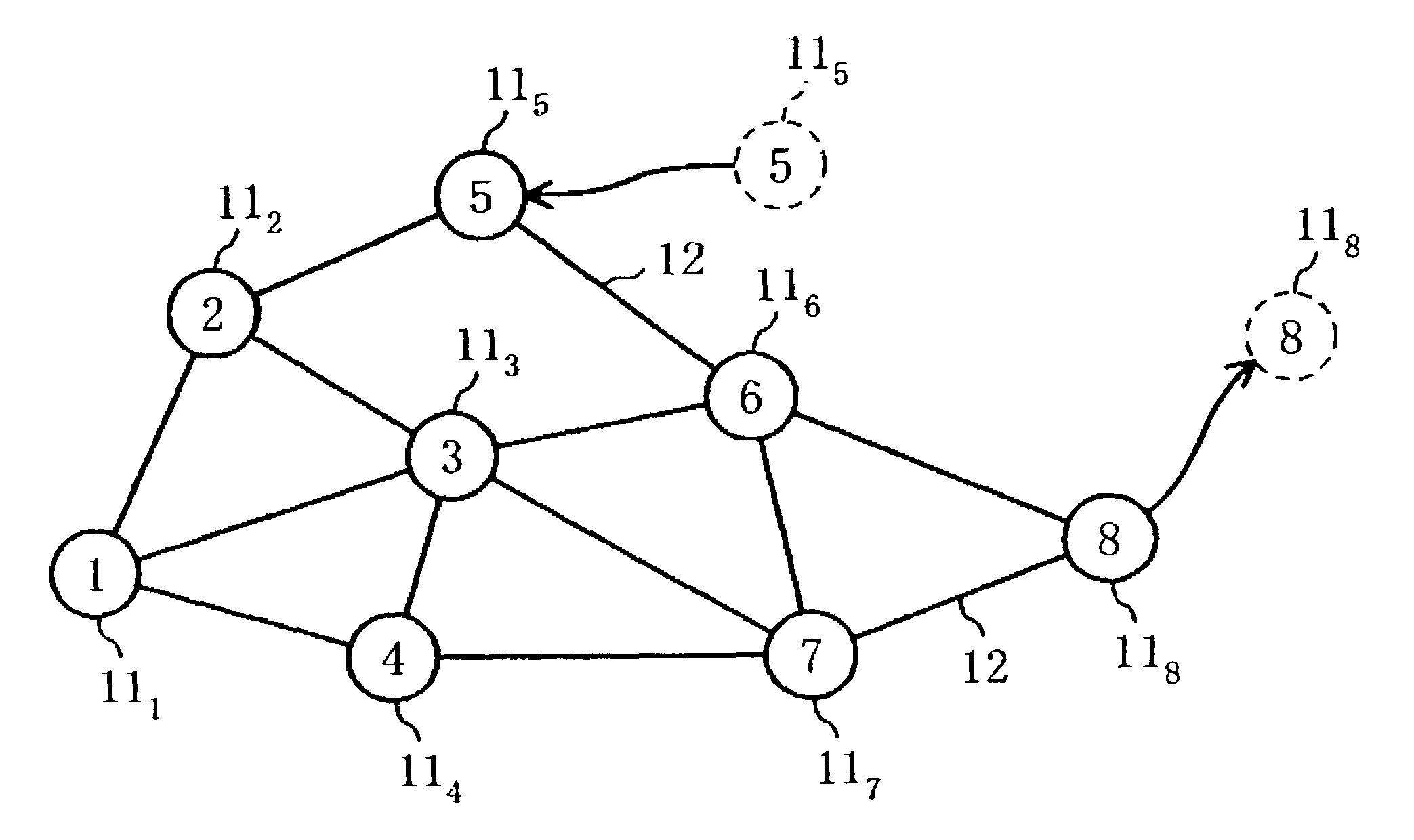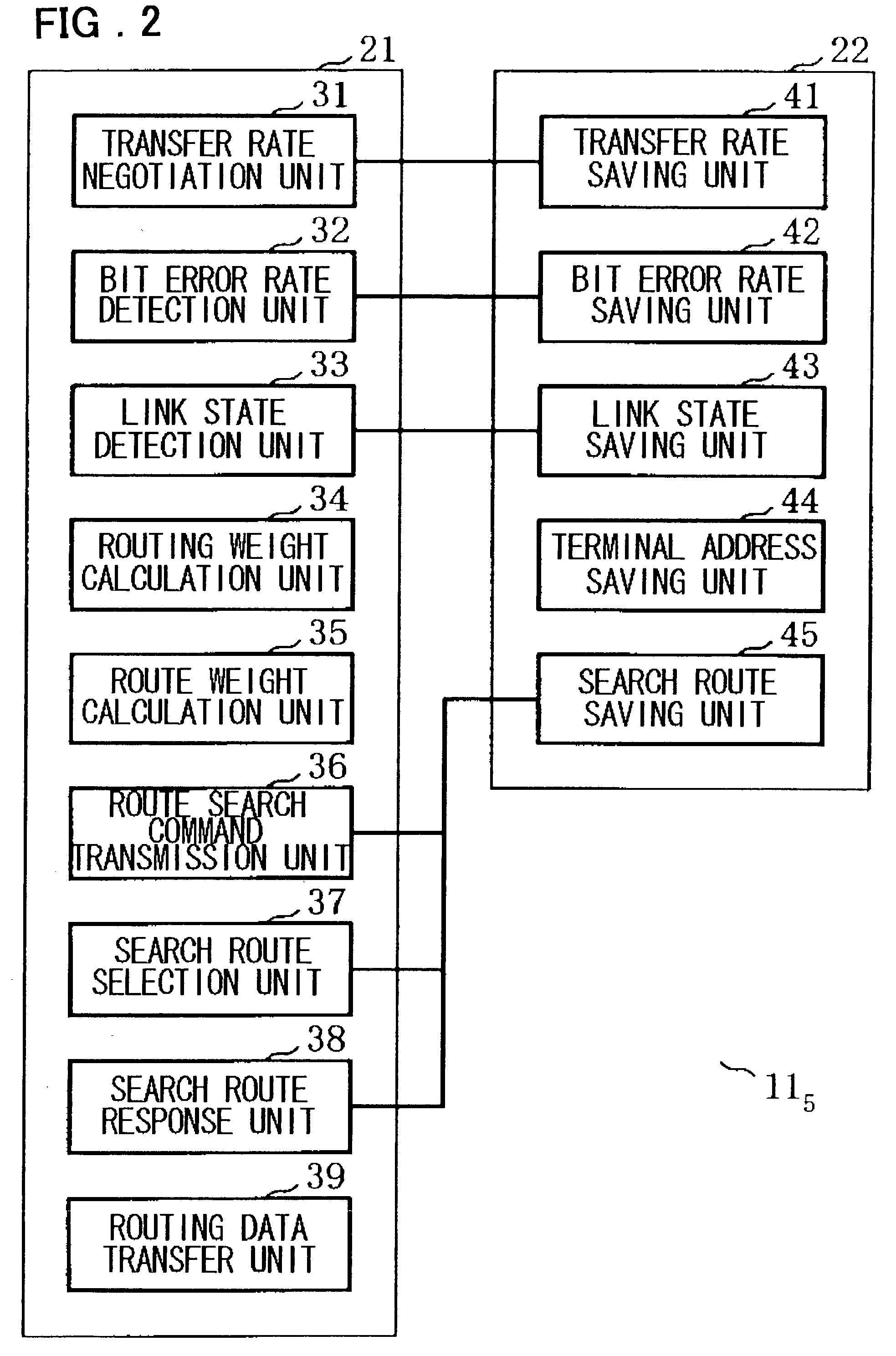Radio terminal that decides a best route based on weight values of communication paths
a radio terminal and weight value technology, applied in the field of wireless terminals, can solve the problems of preventing communication from being performed, breaking the communication link, and difficult to directly apply the proposals described above to local networks such as ad hoc networks
- Summary
- Abstract
- Description
- Claims
- Application Information
AI Technical Summary
Benefits of technology
Problems solved by technology
Method used
Image
Examples
Embodiment Construction
[0070]Preferred embodiments of the present invention will now be described in detail.
[0071]FIG. 1 illustrates a local network to which terminals according to one embodiment of the present invention is applied. It is assumed that a plurality of wireless terminals 111-118 are provided in a relatively limited area as shown in the figure. The numerals 1-8 in the circles (◯), which indicate the terminals 111-118, represent unique addresses of the terminals. This figure indicates the fifth wireless terminal 115 has moved from somewhere else and has joined this local network. Each of the straight lines joining the wireless terminals 111-118 indicates a link 12 between each two terminals. When the fifth terminal 115 has joined this network, the link 12 is created for data communication with other wireless terminals 11 in the network. Conversely, for example, when the eighth wireless terminal 118 has left the network, the link 12 is released at that time. Therefore, it is required for a wire...
PUM
 Login to View More
Login to View More Abstract
Description
Claims
Application Information
 Login to View More
Login to View More - R&D
- Intellectual Property
- Life Sciences
- Materials
- Tech Scout
- Unparalleled Data Quality
- Higher Quality Content
- 60% Fewer Hallucinations
Browse by: Latest US Patents, China's latest patents, Technical Efficacy Thesaurus, Application Domain, Technology Topic, Popular Technical Reports.
© 2025 PatSnap. All rights reserved.Legal|Privacy policy|Modern Slavery Act Transparency Statement|Sitemap|About US| Contact US: help@patsnap.com



